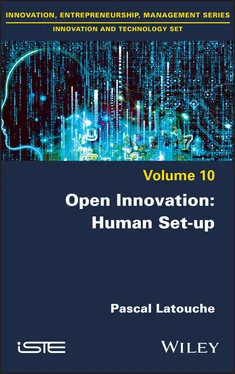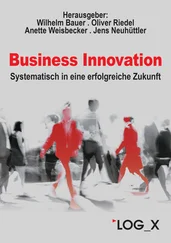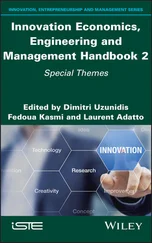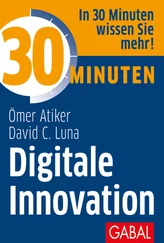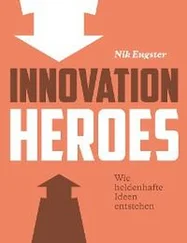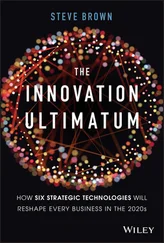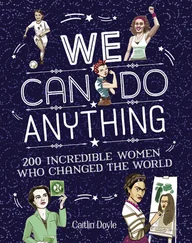– “You’re a big company. You are expected to encounter problems and you will make the front pages of the web media if you botch it” – A representative of a well-known web media company.
– “Start-ups want business, not communication” – A successful entrepreneur who has succeeded by sheer determination.
– “Be careful to strengthen them while you accelerate them, you’re big and startups are small” – An expert used to coaching start-ups.
– “You know, your company, like a lot of big companies, doesn’t have a good reputation in its relations with start-ups. Stop pillaging ideas!” – An entrepreneur who had had some unfortunate experiences with my company.
– “You’re a great brand and you have a big role to play with start-ups, how can we help you?” – A representative of institutions that promote start-ups under the aegis of the government.
It wasn’t just external actors we were looking at. Internal actors were also solicited. I’ve encountered internal colleagues at somewhat different points.
– “Start-ups are no more innovative than we are internally” – An R&D Engineer.
– “Step forward and engage that corporate accelerator. Move the boundaries, even though we know you won’t just make friends” – A Chief of Staff.
– “Don’t make promises to start-ups that the company can’t keep” – A top manager in innovation.
– “It’s not clear what the risks are of working so conspicuously with start-ups. Identify risks and control them operationally” – A Communication Manager.
– “Business partnerships with start-ups? Why not! Make us some proposals and we’ll take a look” – A Business Unit Manager.
This is a small sample of the exchanges. For the internal actor, as for the external one, the tone was sometimes positive, sometimes aggressive. But in any case, my feeling was that there was a real desire to face this mystery embodied by the universe of start-ups whose media were buzzing in our ears every day. Everyone was asking to see, some in an observing role, some in a potential inquisitor role, and some in a benevolent one.
What better way to try to succeed than to enlist the services of allies, as well as critics, both internal and external? That’s exactly what was going to be done. From the outside, we could expect pushing the best start-ups and helping us strengthen them in terms of structure and people. Internally, we were able to find the first “courageous” people who were at least committed to taking a good look at start-up cases and helping us to retain those that made sense. It was difficult at this “first” stage of obtaining firm commitments from commercial partnerships at the end. I was counting on the involvement of the corporate accelerator team to make sure we got there as much as possible. Shy, numb, no doubt, but I was not giving up.
Involving the actors, while taking final responsibility for the outcome seemed the right stance to me. If it worked, it would be thanks to all these actors. If it went wrong, it would be because of me. This is reassuring enough for an organization faced with the unknown to be able to blame someone in advance in case of failure. It seemed to me a good way to bring the external “family” (of start-ups) closer to the internal “family” (of the established company). The corporate accelerator and its small team (two people including myself) had to and was going to enter unknown lands that had nothing to do with marketing, sales or even the idea that one had of business techniques.
A few rules were set (three months of acceleration), a few priorities for start-ups, a few legal frameworks, a few services to be offered to start-ups against the backdrop of a business objective clearly stated from the outset. In a way, the entire design part of the corporate accelerator was forged in a few days, two weeks at the most. The best way forward for me was to learn by advancing and systematically asking myself the following questions: How do I serve the purpose through what I do? How is what I do profitable/dangerous for my company and for start-ups? Do I have the resources to act? I never consciously questioned who I was, what my values were. However, we will see later on that this is important, even of fundamental importance, when we want to forge a structure.
A website, a Twitter account, a few tweets to announce and maintain the first call for applications, and in February 2014, the first season of acceleration was launched. This launch was, in my opinion, as much in the realm of improvisation as it was in the realm of reflection, and I am quite unable to say what was prevailing at the time. Action took precedence, with all the risks that this entailed and with confidence in our desire to succeed. In fact, I remember the launch day (with media support). Originally, neither I nor my collaborator were foreseen being in the “photo” or to telling our story…. A curious approach on the part of large groups to hide those who had done things in reality.
Since then, many seasons followed one another. The corporate accelerator even diversified its program offerings over the years. In addition to my national roles, I have even taken on a coordinating role in the world of corporate accelerators that have sprung up in many countries. Each corporate accelerator recruits start-ups at the national level for national business partnerships. The most promising start-ups are “exported” to other markets by being supported by the corporate accelerator of the market concerned. This is called cross-acceleration. We are now a network of corporate accelerators on four continents, a unique asset for my company and what I believe is unique in the world. A fine mechanism that all those who are proud of, wherever they are in the field, at headquarters or internationally, have believed in it not by words, but by action.
I.5. You (really) want to know everything!
Let me share with you what you will discover in this book. This is the second one. The first one I entitled “Open Innovation, Corporate Incubator”, the fruit of my doctoral thesis, was, as I like to say, halfway between “the academic” and “the general public”. By that I mean that my point may have seemed a bit too elaborate. I’ll take it! The aim was to understand how open innovation works using the artifact (representation) of the corporate incubator. Theories were inevitably shared, but the expression of the field was favored (mainly managers of corporate structures supporting start-ups). For this second opus, you will judge for yourself the accessible nature of the work. “ Everything you always wanted to know about the relationship between start-ups and large corporations, but never dared to ask ” could have been its title in reference to Woody Allen’s film “ Everything you always wanted to know about sex, but never dared to ask ”. As you can imagine, my theme is somewhat different, although we’ll often talk about marriage.
In the overall system that a company and its environment constitute, managers of open innovation systems act as architects whose main raw materials are interactions. They have to forge and then manage the latter in order to contractually marry the protagonists of two different worlds: the CEO of a start-up and the employee of a large group. Each of the two protagonists will interact with their own personalities and beliefs. In addition, their respective “families” (mentors, etc. for the CEO, and colleagues, etc. for the employee) are also involved in this marriage.
The aim of this book is to explicitly describe the daily interactions that need to be implemented to transform these one-to-one, or one-to-many, interactions into tangible (business partnerships) and intangible (satisfaction in the relationship) values. Through my experience, I will try to give an account of the words and behaviors of the protagonists encountered during all these years. My observations will allow me to better understand the perspectives that everyone gives to each other in the interactions, to better understand the perceptions that arise from them. It is the reality of the interactions themselves that will thus be exposed in order to know how to get the best out of them. The conclusions will broaden the scope of reflection beyond the business world. Indeed, human interactions to generate value (in the broadest sense) are not only a necessity in the professional field but also in the personal field. The place of humans in any system is essential. They need to find it to move forward and generate value. On balance, it is our behavior towards others that is in question.
Читать дальше
